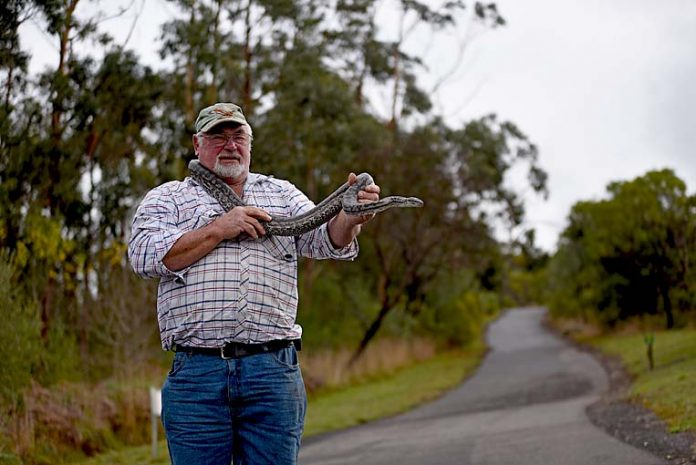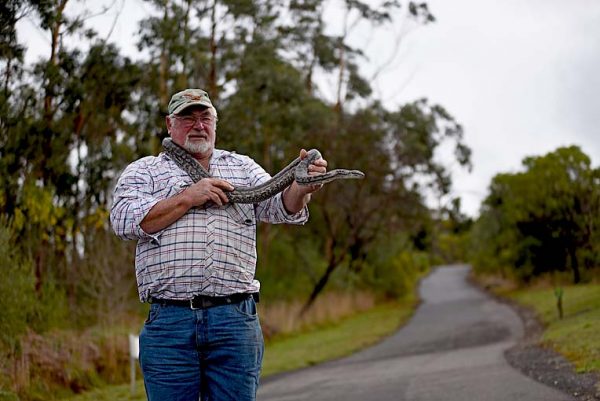

EXCLUSIVE
WHILE the great Centenary Tower python mystery has yet to be officially solved, a veteran snake catcher believes he may have the answer.
Three pythons – which are not native to the area – have been discovered at the Crater Lakes precinct on the edge of the Blue Lake city.
The latest coastal carpet python was captured by council staff and is now being cared for by Mount Gambier snake catcher and educator David Miles.
Holding onto to the six-foot long beautifully patterned python, Mr Miles suggested they were being deliberately released at the picturesque crater lakes by residents.
But he did not believe the motive was sinister, but people simply no longer wanting to take care of these pets.
This mystery unfolded more than 12 months ago following an alert an unusual and large snake was up at the tower.
“My daughter went up there to get it but it had been run over – that was a Murray Darling python,” Mr Miles said.
“Then, a month ago, a Tantanoola snake catcher Jake Manser went up there and got a coastal carpet python at Centenary Tower.”
This fuelled the legend of the Centenary Tower pythons.
“I was then called by council workers around two weeks ago there was this snake up there. One of them got it and put it in a tub and brought it down to me at the bottom of the Centenary Tower car park,” Mr Miles explained.
“The first thing we thought of was a snake had got away from someone, but when you get three you start to think someone is releasing them.”
According to Mr Miles, people could be releasing these pythons because they were growing too large.
“When they first get them, they are 12 to 18 inches long, but over a year it grows and it is over six foot long and they think ‘wow, it is getting too big’,” the snake catcher said.
“So they do not want it any more and they release it. This has happened in America in the Everglades and it is becoming a huge problem over there.
“This will not present the same problem because we do not have the same conditions.
In America, they are eating a lot of the native animals, have no predators and are becoming what is known as ‘super snakes’.”
While these pythons could breed, he said they could not reproduce with a venomous snake.
“Those pythons are native to Australia. The nearest python to us is the Murray Darling up around Blanchetown and north of there.”
He said pythons fed on native animals in the crater lakes, similar to local native snakes harbouring in the precinct.
“There are a lot of copperheads and a few tiger snakes up there, they eat lizard, possums, sugar-gliders.”
Mr Miles said he believed people were also releasing pythons because children eventually lost interest and parents did not want to keep these reptiles.
He warned it was “highly illegal” to release snakes in this manner.
“We have spoken with the department of environment about the issue. It is annoying people are doing this type of thing.”
While there were rumours for some time pythons were nestled in the crater lakes area, he revealed he started to believe they were real after multiple sightings.
“Too many people had seen them. People had seen them laying on track to get warm.”
He revealed these snakes could give people a fright given they may not realise they were not venomous.
“We do not know if they are more there. It seems unusual they seem to go to Centenary Tower.”
Perhaps, he said people were releasing them at the Centenary Tower car park area.
He said the crater lakes precinct was a natural environment for snakes given there was plenty of cover and it was full of mice and skinks to eat.
The Lower Limestone Coast is home to the eastern brown, tiger, lowland copperhead and a little whip snake around Bool Lagoon and a white-lipped snake that can be found anywhere in the region or across the border.
“The eastern brown is 12 times more toxic than the Indian cobra and the second most toxic land snake in the world,” Mr Miles said.





